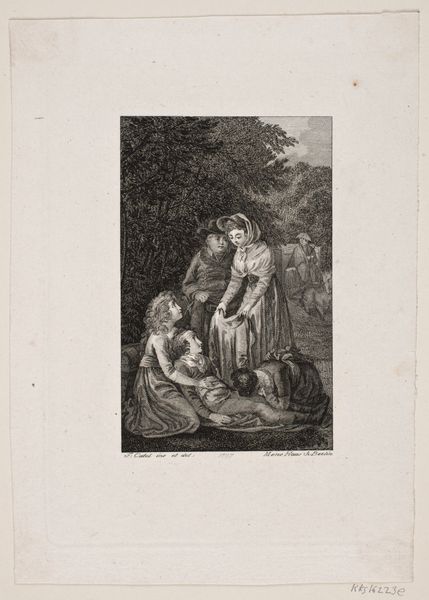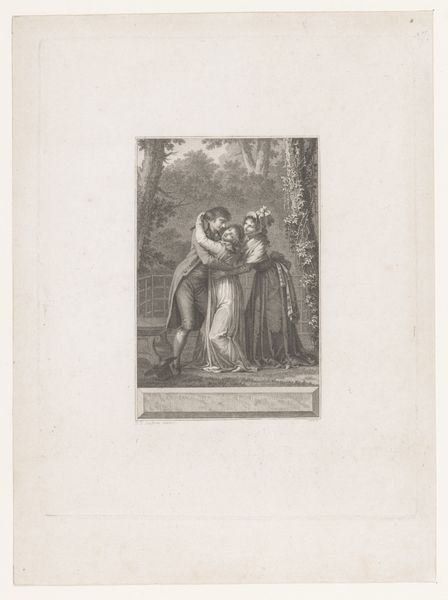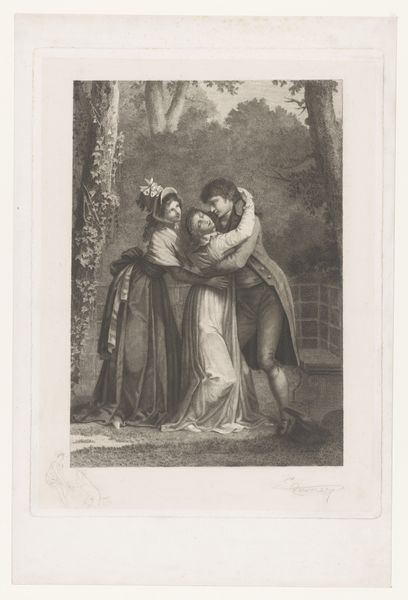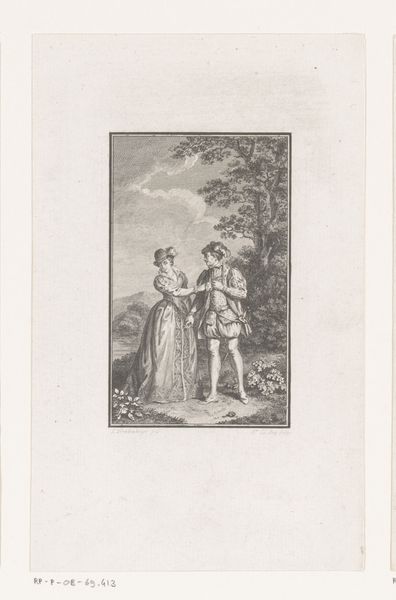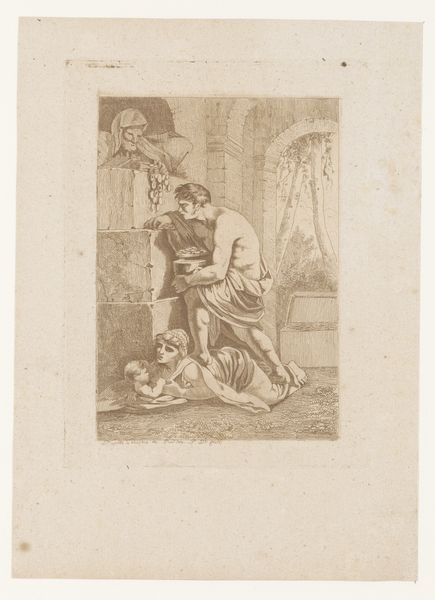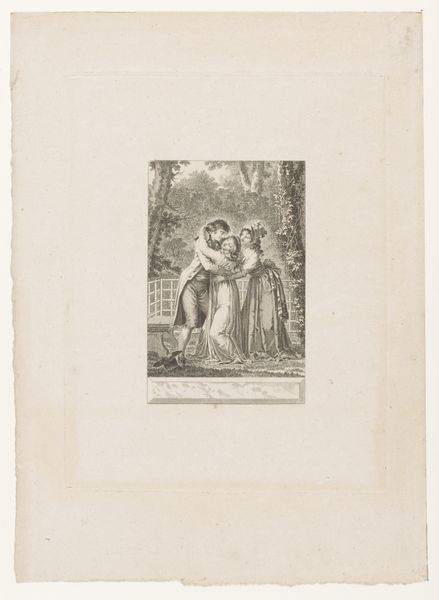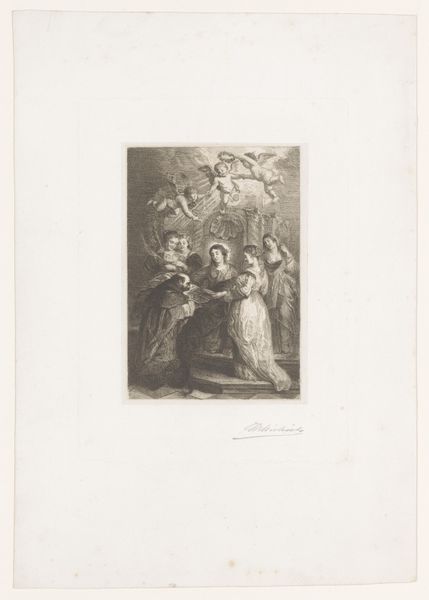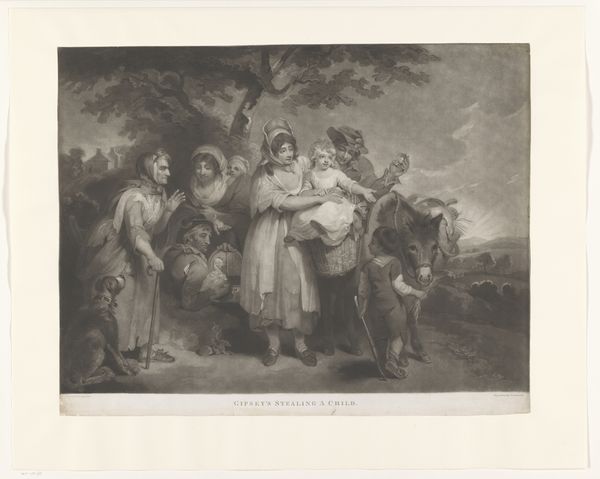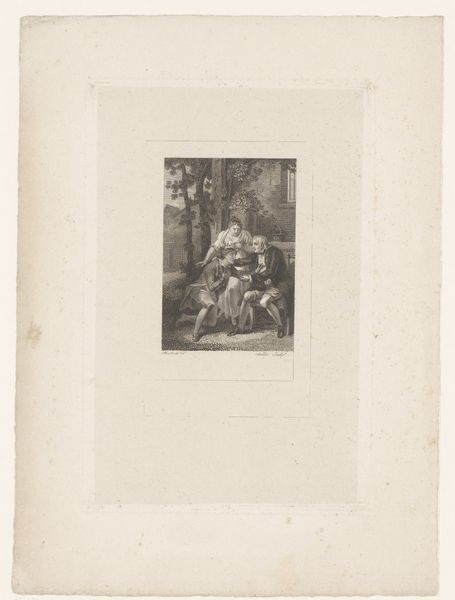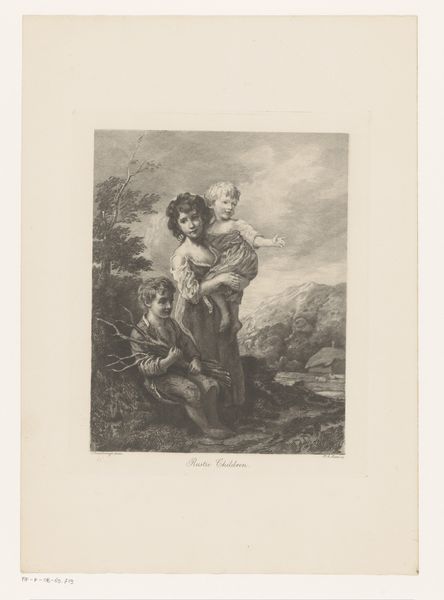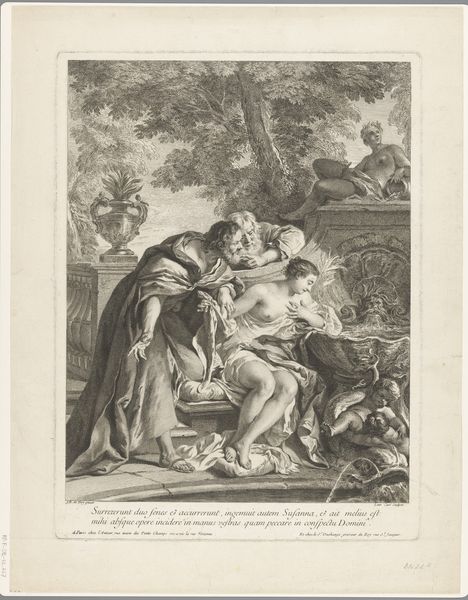
engraving
#
allegory
#
landscape
#
figuration
#
romanticism
#
history-painting
#
engraving
Dimensions: height 298 mm, width 227 mm
Copyright: Rijks Museum: Open Domain
Curator: Let's turn our attention to "Verliefd paar omringd door putti," an engraving created in 1797 by François Joseph Etienne Beisson. This artwork blends romanticism with allegory. Editor: It's immediately striking. The figures, rendered in such precise detail through engraving, emerge from the monochromatic landscape with an ethereal, almost dreamlike quality. The texture, from the drapery to the foliage, invites a close visual inspection of its materiality. Curator: Precisely. And note how the artist employs allegory in the service of romanticism, the putti are classical symbols, here, witnesses to love. But the landscape itself takes on a role as well. These pastoral settings frequently signified ideas about innocence, a pre-industrial unspoiled world—which gains significance when you realize the societal upheavals around 1797 with the rise of revolution. Editor: I see your point. The composition feels quite deliberate. The kneeling man and standing woman form a powerful central vertical axis balanced by the delicate horizontals of the landscape. But how does the symbolic placement and orientation play into the historical understanding? Curator: Contextually, consider the era's social and political climate. The romantic movement valued emotion and individualism. Figures expressing emotion like this resonate when seen in contrast with Enlightenment rationality. Here, you see ideas about gender roles: a kneeling man below a woman as an idealized representation, yet one rooted in social expectation. The cherubic putti, simultaneously infantile and symbolically loaded. Editor: Absolutely. Thinking formally again, the tonal range, skillfully rendered through the engraving technique, shapes the scene with pronounced highlights and shadows, evoking drama. A sort of structural reinforcement. A play between idealized love set against the historical turbulence of the late 18th century is, quite literally, etched in this piece. Curator: Indeed. The very act of creating an idealized image during an age of upheaval makes the socio-political commentary that much stronger. Editor: A compelling fusion of artistry and sociopolitical discourse, captured beautifully in this engraving. Curator: Yes, viewing "Verliefd paar omringd door putti" offers insights into late 18th-century European thought.
Comments
No comments
Be the first to comment and join the conversation on the ultimate creative platform.
